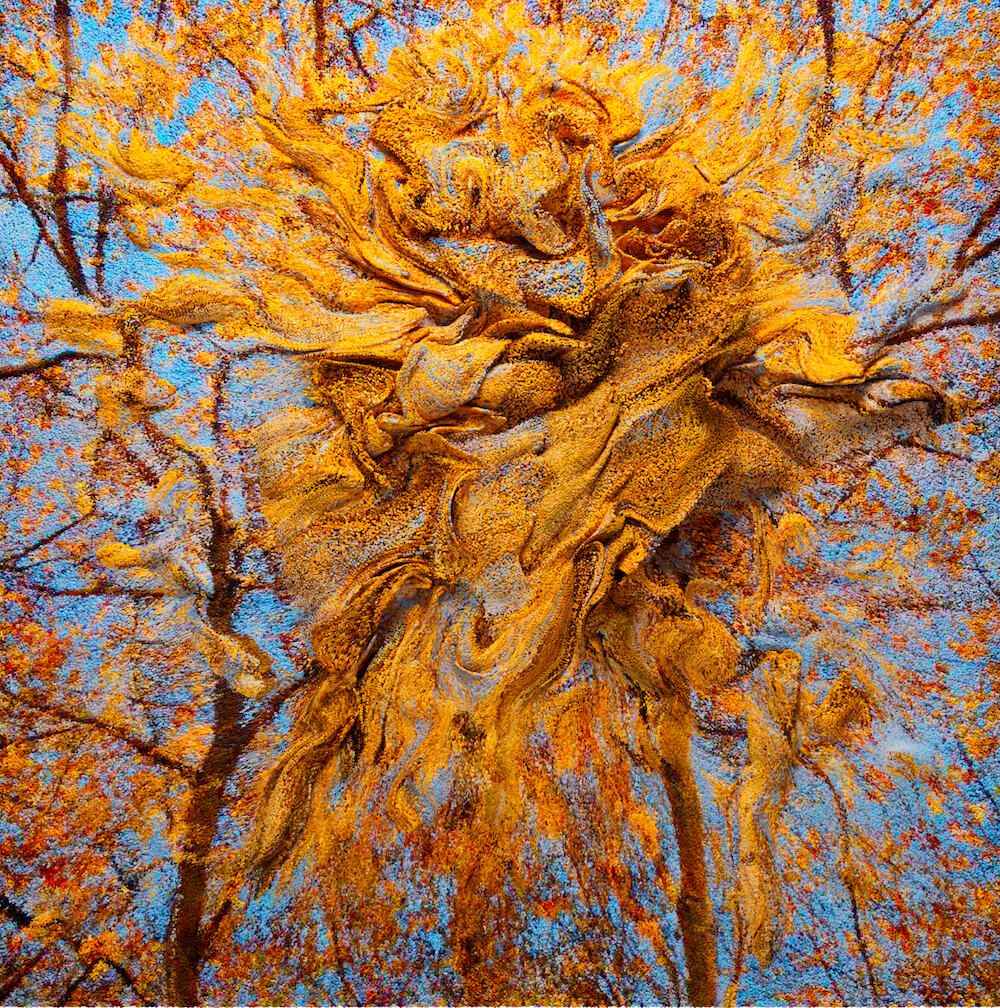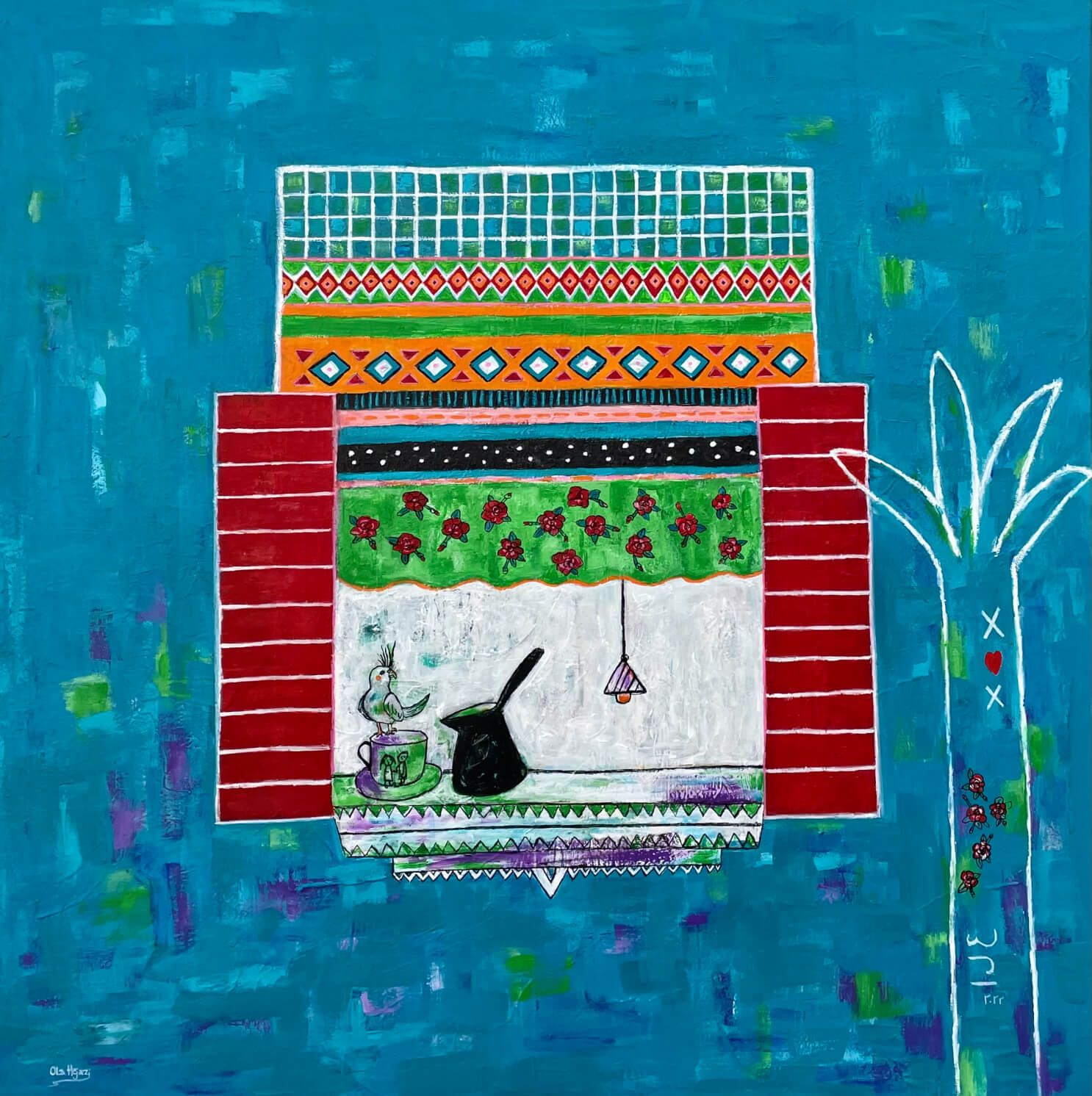Data Painting - A crossroads of art, science, nature and technology
Machine Hallucinations, Coral Dreams, based on millions of photographs of underwater corals, 2021. Courtesy of the artist.
“Every single image that you can imagine from national parks, forests, rainforests, water, oceans, lakes, flowers, trees, and all kinds of natural beauty has been put in our AI. Then we made this piece, and I do believe that this piece created this kind of unique sense of therapy for our audience…”
Artist Refik Anadol
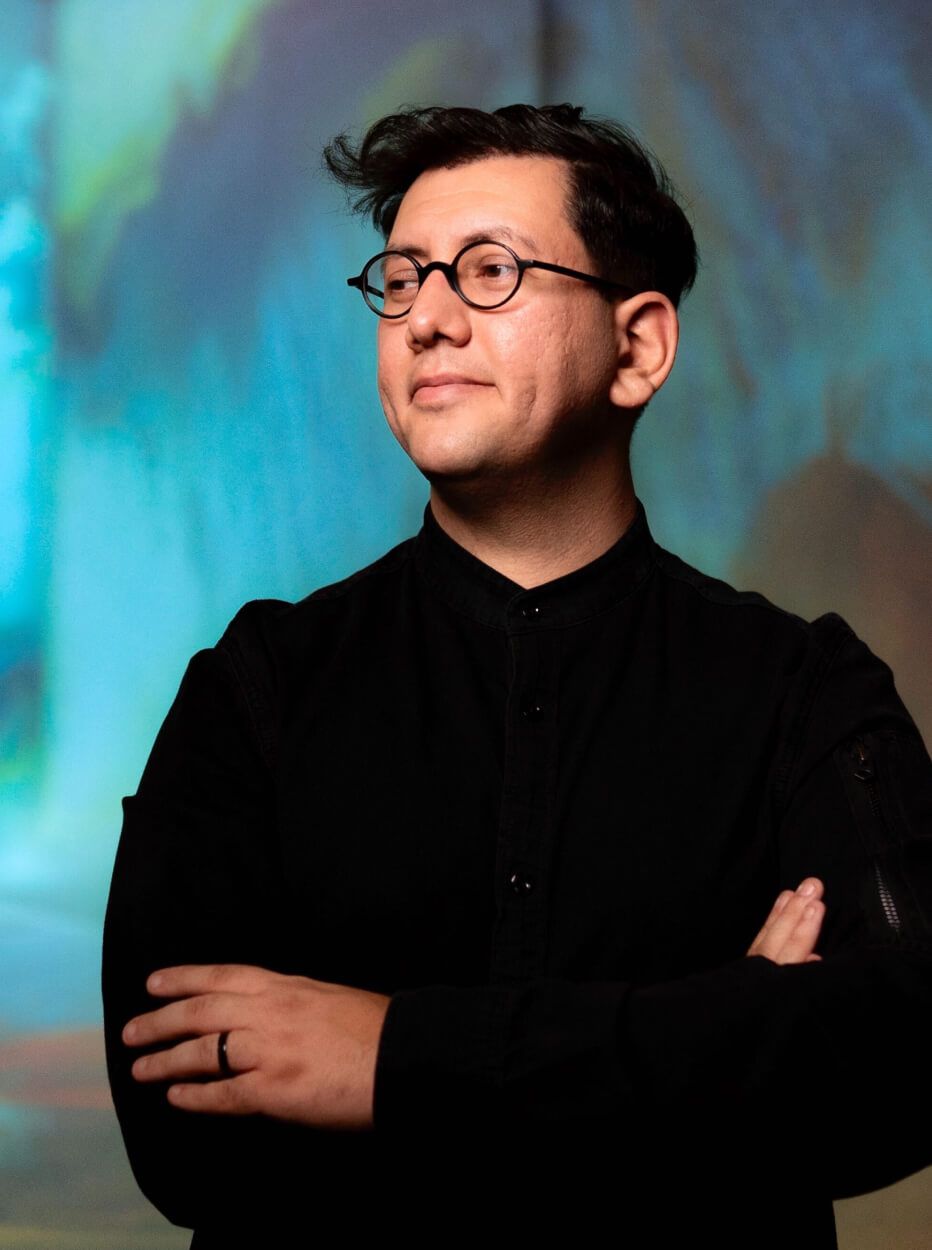
Unique, transformational and alive are just some of the ways we can describe the brilliant creative work of Refik Anadol. An internationally renowned award-winning new media artist, director, and pioneer in the aesthetics of machine intelligence, he uses data to create artworks and installations that take varied virtual and physical forms.
Through his immersive art, entire buildings come to life, floors, walls, and ceilings disappear into infinity. He has created many projects using raw data then processes this data and turns it into beautiful visuals that makes the invisible visible offering the audience a new perspective of their world.

Quantum memories, 2020, on display in NGV triennial, melbourne, australia, photo by Tom Ross. courtesy of the artist.
By proposing the possibility of “post-digital architecture,” Anadol likes to invite his audience to imagine alternative realities by redefining the functionalities of both interior and exterior architectural elements.
One of Refik Anadol Studio’s epic works includes the intersection between Google AI Quantum Supremacy experiments, machine learning, and aesthetics of probability.
Quantum Memories utilizes Google AI’s publicly available quantum computation research data and algorithms to explore the possibility of a parallel world by processing approximately 200 million nature and landscape images through artificial intelligence (AI). The result is an impressive, immersive series of artworks that visualize an alternate reality of nature.
In this interview with Ithraeyat, Anadol shares his story and how he started his journey. He also tells us about the unique process of making his art, and how he uses art to create a space for his audience to experience and explore life and nature from a new perspective.
Q1. We are featuring art pieces that give the artist a special sense of therapy, healing and
're-setting.' Do you have a favorite or two that you feel inspires you and gives you joy? And if so, why?
One of the most inspiring moments that happened to me was in Berlin, one of our projects called Nature Dreams at König gallery last December. In this project, we created an AI data sculpture in St. Agnes Church in Berlin that transformed the space into an AI dream by using 200 million images of nature.
Every single image that you can imagine from national parks, forests, rainforests, water, oceans, lakes, flowers, trees, and all kinds of natural beauty has been put in our AI. Then we made this piece, and I do believe that this piece created a kind of unique sense of therapy for our audience. More than 200,000 people visited this experience in only two months. It was the largest audience ever that went to a gallery in Europe. So, I think using AI in a safe and secure space and using it ethically creates this well-being aspect with a meditation on technology. That was one of the first times I saw people sharing their beautiful moments, joy, and excitement with their experiences in life after experiencing our artwork.

Machine Hallucinations, Nature Dreams, König Galerie, Berlin, Germany, Dec 2021. Photos by Roman Maerz. courtesy of the artist.

Machine Hallucinations, Nature Dreams, König Galerie, Berlin, Germany, Dec 2021. courtesy of the artist.
Q2. Tell us, what does 'art' mean to you?
Art is humanity's capacity for imagination, and I do believe it's the artist's role to push the edge of imagination, to find the meaning of life and create a sense of imagination. This, as well as pushing the boundaries of our mind to bring beauty, aesthetics, questions, and meaning in life.

Machine Hallucinations, Nature Dreams, König Galerie, Berlin, Germany, Dec 2021. courtesy of the artist.
Q3. Take us back to your first art piece, and what was it about and when.
My first artwork was literally when I was learning how to program a computer. I will say it was 2008 when I also coined the term (data painting). It was my very first time using an open-source software language called Pure Data and our professor showed us how to connect a sensor to the software that makes the invisible visible. Since then, I have been extremely inspired by the idea that any data around us can become an artwork. Data is not just a bunch of numbers; data can become a form of memory. This memory can take shape in any form, color, and meaning. Since then, I imagine that if data becomes a pigment, if data becomes a material, I believe it won't dry, it won't stop, it won't pause or freeze; I think it will be in flux, in motion, in constant change like life.
Q4. Ithraeyat featured on its cover an AI piece, and it sparked quite a conversation.Why do you feel many people fear AI, and what have you learned through your own creative exploration of AI?
First, as humans, we are pretty much reflexive about finding things that may go wrong. I think it's like not falling, not hitting our heads and being careful about life. Second, I think we're applying our sensors mechanisms to AI, and AI is everywhere; what we eat, what we watch, what we buy, what we read and what we hear, is pretty much defined by AI, and it is quite predictable that this will create a problem around privacy and eventually free will. So, that's a very problematic situation with AI. However, in the meantime, I've learned that it's quite easy to see the negative side of things in life, but what else can we do with that? How can we be more creative? How can we transform our memories into dreams? How can we use AI to expand the human mind, use it for good things that we need for humanity and solve complex problems in science with it? I think AI has an enormous potential that was not possible before for humanity. And from a creative perspective, to me, it is one of the most inspiring ways of imagining. I cannot draw a proper form on paper with a pen, but I know how to draw it in my mind and program and create computer graphics for the things in my mind. So for people like me, working with digital art and digital technologies, AI is one of the most inspiring forms of creativity.

Machine Hallucinations, Nature Dreams, König Galerie, Berlin, Germany, Dec 2021. courtesy of the artist.

Machine Hallucinations, Coral Dreams, based on millions of photographs of underwater corals, Faena Beach, Miami. 2021.
Q5. I see nature is one of your recurring themes. Can you tell us more about why nature continues to inspire you and nature's role in our well-being?
I believe that nature is the most fundamental and important space where we all need to take care of it, be careful about it, and be respectful towards it. That's where we come from, and that's where we go. I think nature is one of the essential aspects of our life, especially during the pandemic. Everyone in the world had to, unfortunately, stay at home. That's when I re-imagined that we can go to nature, but can nature come to us? And that is when I understood how limited our technology and tools are in bringing nature to us. During that time, I realized how important it is for us to meditate and connect with nature, the divine part of nature, and be reminded of where we come from and how we can stay connected to the incredible ecosystem. This biome allows us to survive every single day. I believe nature is the most inspiring form of art that has been there and will be there, and I think for our well-being, it's essential to respect and remember the richness of nature every single day.
Q6. What is your art project in Saudi Arabia about? and the inspiration behind it?
The project was commissioned during the Noor Riyadh, an incredible exhibition curated by wonderful curators to bring imagination, hope, and beauty using light as a material. As an artist working with light as a material for 14 years, I created a project called ‘Machine Dreams Riyadh.’ The project used more than 9 million images of photos from the ISS telescope, Hubble telescope, which has been recording entire galaxies and the stars and memories of the universe -I'm saying it kind of poetically- and created the project through this data set. For the project, we used machine learning algorithms, created three different AI algorithms, and let the machine dream. For each chapter, the AI went through the raw data set and created a meaningful pattern, a sculpture in a three-dimensional world. Inside, we have a 3D immersive room; when you step inside this room, it creates this void, an environment where you feel like you are stepping inside a machine's dream. The room has three walls augmented by a LED media wall, and the rest is a mirror to create the effect of Infinity. The project uses cutting-edge algorithms, specifically fluid dynamics, lower dimension reduction, and many other complex algorithms and generative computation to create a sense of an inspiring, hopeful, and joyful experience of a machine's dreams. The project uses images from Riyadh and the region as its starting point, then goes into the universe.

Machine hallucinations, Nature dreams, by Refik Anadol, at the Center Pompidou-Metz. Courtesy of the artist.
Q7. Tell us something about you that most don't know, perhaps a pet you have, a routine you do, a place of inspiration you always go to and so on.
I'm extremely inspired by nature, and recently I was on an amazing trip to the rainforest in the Amazon in Brazil. I was able to see a great part of the rainforest. My wife and I are constantly searching to discover new spaces and cultures and trying to create new journeys on earth and celebrate being alive. I'm also very inspired by the working scientists who have been pushing the boundaries of imagination, neuroscientists, quantum computation scientists, and many more. Another thing is that I love coffee, and the coffee in Riyadh was amazing. I generally love Turkish coffee, espresso, and all kinds of coffee, but I particularly love the coffee in Riyadh.
Q8. What motto do you live by?
My purpose is to dedicate my life to creating art for anyone of any age and background. I'm using machine learning algorithms to develop dreams from the collective memories of humanity and hopefully create a collective consciousness for humanity. I hope our work will be helpful to people’s well-being. The world has enough problems, and I am here to bring joy, inspiration, and hope with my work.

Alkazar Dreams — AI Cinema created by using 150 historic Turkish movies, Turkey, on Nov. 24, 2021. Courtesy of the artist.
Q9. Tell us more about your next steps and future project coming up?
I'm very excited about our next show opening at The Museum of Modern Art (MoMA) in New York 19th of November this year. It is a dream of any artist to work with such an important institution, and I'm extremely grateful for this journey and this next step. We are also working on our Metaverse project, Dataland which will open in Los Angeles next year. This will be the first example of using multi-sensory experiences in both the metaverse and the physical world. I hope to bring the project to the region and bring it to everyone.
Q10. What advice do you give new artists, and any lessons learned you can share with us?
First of all, defining success is very important. For me, success is making a dream reality. The distance from dream to reality is exactly the journey we should be looking for. The second is, of course, hard work. I don't believe that there are any shortcuts or finding immediate solutions for challenging situations. Working so much is not a problem; being efficient, asking questions, and even failing are not problems. Failing is a major lesson if we can ask real questions and don't repeat the same problems.
Lastly, we are all on the shoulders of many giants before us. There is no way that we are the only ones imagining what the future may be. That is why I advise the young generation and any artist coming up to remember our giants, heroes, and teachers and always give credit and respect to your heroes and those who inspired you.
With such drive and passion, we expect to see a lot of new barriers broken and artistic lines redefined by Anadol in the coming months and years. Whatever artworks he creates, we are sure they will be quite a journey of both the self and the collective sense of humanity and the world around.

Machine Hallucination NYC.
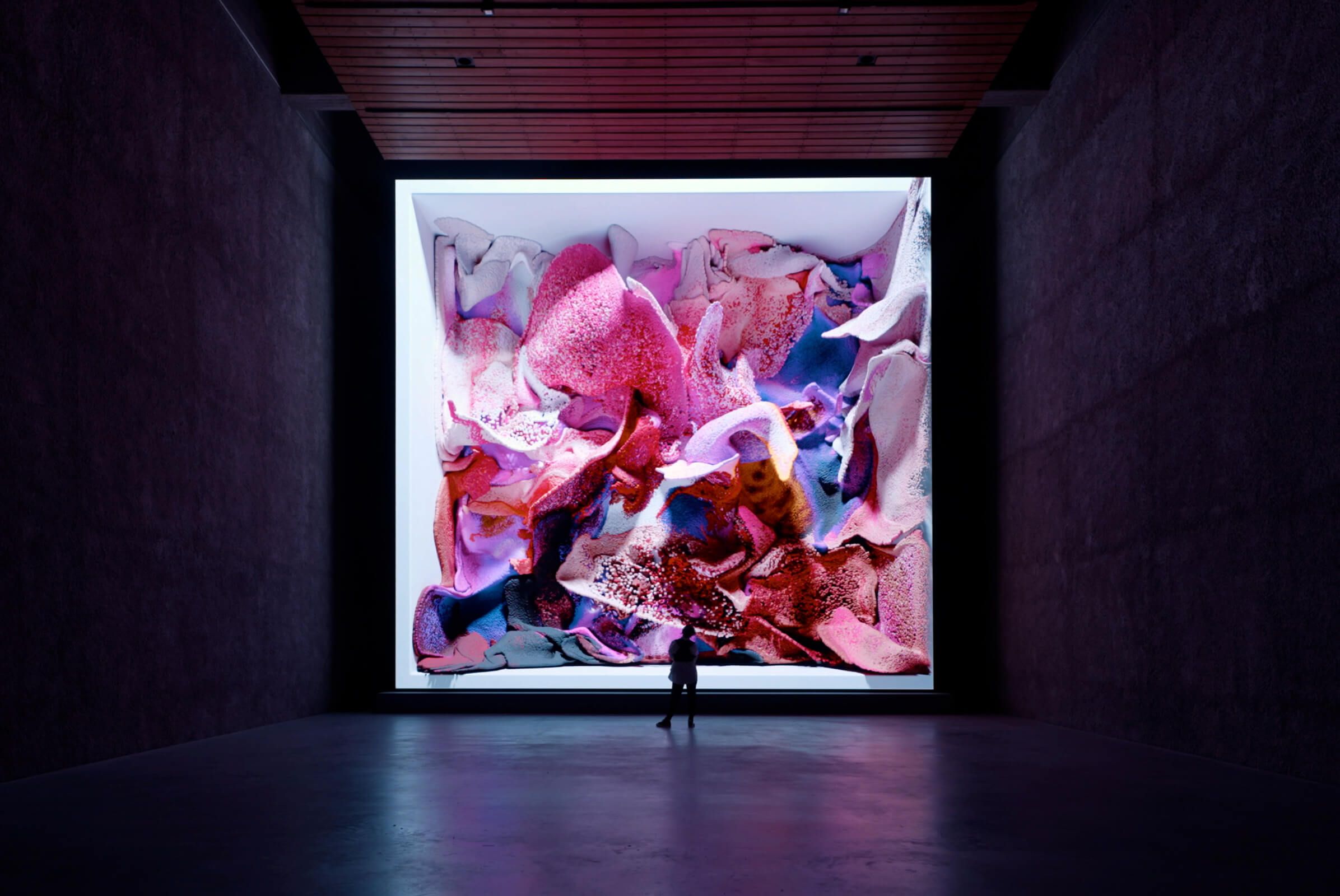
Koenig Gallery.
Serpentine Metamorphosis, an immersive room set in the iconic Piazza Duomo, Milan, Italy, October 2021.
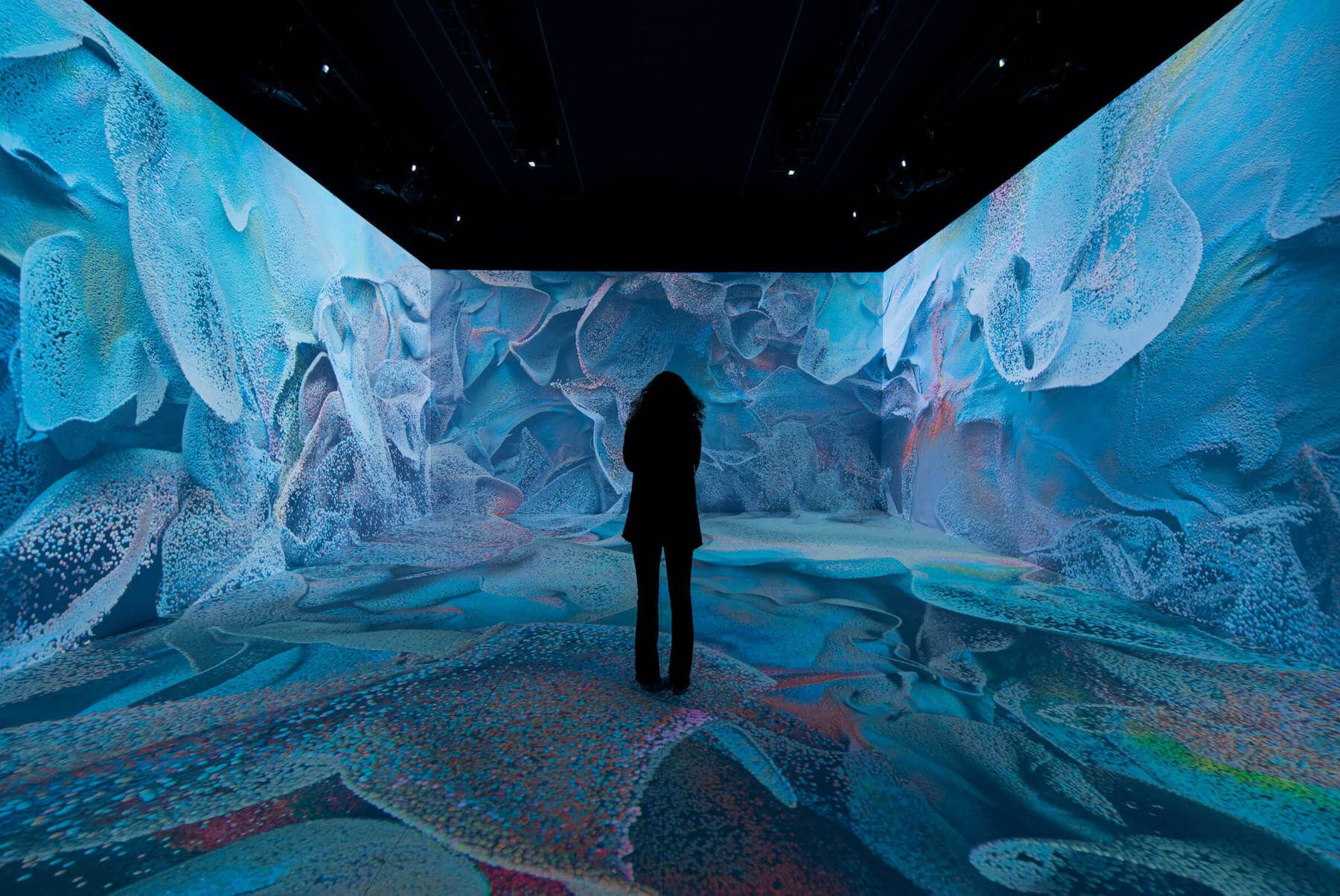
Machine Memoirs: Space, the studio’s most comprehensive solo exhibition in Istanbul, to date, March 2021, Pilevneli Gallery, Istanbul, Turkey.
